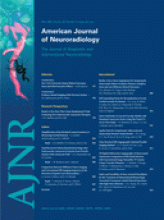M.T. Lawton, D.R. Gress, R.T. Higashida, eds. New York: Thieme; 2006, 304 pages, 33 tables, 250 illustrations, $139.95.
In their preface to the recently published Controversies in Neurologic Surgery: Neurovascular Diseases, editors Michael T. Lawton, Daryl R. Gress, and Randall T. Higashida write that their aim for the volume was to explore some of the controversies in neurovascular surgery; to accomplish this goal, they invited “leaders in neurosurgery, endovascular surgery, and interventional neuroradiology” to “express openly their perspectives and practices, with an emphasis on decision-making and the art of medicine [my italics], rather than on the techniques and results which are elaborated abundantly in so many other textbooks.”
The multiauthored book has 28 chapters organized into 3 sections. The first, “examines future trends in open cerebrovascular surgery, endovascular techniques, molecular and genetic therapies, and economic factors.” The second “focuses on specific clinical controversies associated with aneurysms, arteriovenous malformations, dural arteriovenous fistulas, cavernous malformations, and atherosclerotic diseases, presenting the differing perspectives of cerebrovascular surgeons and endovascular surgeons.” The third “examines organizational issues, like structuring a practice to integrate different subspecialists and training specialists for the future.”
Because there is a clear need for a source providing just this sort of information, it is most unfortunate that many of those who accepted the invitation to contribute failed to provide content that is relevant to the editors’ stated intent. Because both the judgment and the perspective needed for sound decision-making and the application of the “art” of medicine are closely linked with experience, one suspects that much of this deficiency results from those who agreed to participate in this work assigning primary responsibility for the contributions to very junior colleagues; almost half (13 of 28) of the chapters have as the first author a resident, a fellow, an instructor, or an assistant professor.
The titles of chapters 1 and 2, “Trends in Neurovascular Surgery” and “Trends in Endovascular Surgery,” along with the editors’ comments in the preface, would lead a reader to believe that these accounts would provide specific information on the authors’ practices, along with the reasons that they have adopted such a philosophy. Instead, there is simply a recap of old and more recent literature relating to the various disease states; at the end, one is left with no insight into how this information is used by the authors in either decision-making or application of medical “art” in their practices. Chapter 3, “Novel Approaches to Neurovascular Diseases,” is a nice and rather complete account of the molecular biology of a variety of cerebrovascular diseases. Of the chapters in this section, it comes closest to meeting the editors’ aims.
Section 2, meant to focus on clinical controversies, instead provides a classic textbook description of the various diseases and their management. Even this is often quite unbalanced; chapter 8, “Surgical Treatment of Anterior Circulation Aneurysms,” has 23 pages and provides an excellent, albeit void of a discussion of controversies, account of the authors’ views on these lesions. However, chapter 10, “Surgical Treatment of Posterior Circulation Aneurysms,” has only 5 pages with barely 1 and a half pages of text; the remainder consists of 7 nice line drawings showing a variety of surgical approaches to aneurysms of the posterior circulation. Rather than building on and using information provided in other chapters, each chapter is an independent stand-alone account of its subject. There is no coherence, and nothing distinguishes these accounts from those provided in numerous of the other multiauthored works.
Section 3 comes closest to the editors’ stated aims. Here, readers are given firsthand accounts of a variety of practice models and are also provided with insight into the pros and cons of each of these. Still, each model and the philosophy on which it is based are simply described without direct discussion of the pros and cons of any of the other models.
In general, the illustrations throughout the text are very poor both in technical quality and in content. What value is there to an audience of cerebrovascular specialists in showing an angiogram of an aneurysm and then another with the aneurysm coiled or clipped?
This text may have some value as a recent source in which students and residents can quickly review past and present options for the management of the disease states that are discussed. It has little value either for experienced practitioners or those interested in gaining real insight into future trends or controversies.

- Copyright © American Society of Neuroradiology












